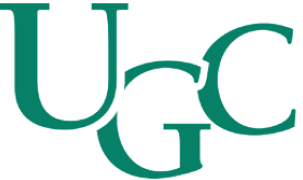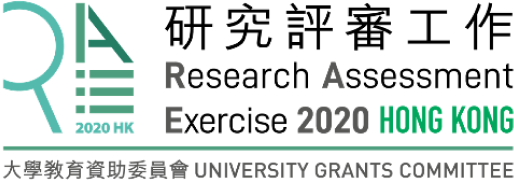Unit of Assessment:
Research categories:
?Chemistry
Chemistry, Physical (3)
Engineering
Engineering, Environmental (5)
Engineering, Chemical (2)
Environment/Ecology
Environmental Sciences (6)
Water Resources (1)
Case Study
Pollution Control by Advanced Cost-Effective Photocatalytic Treatments
1. Summary of the impact
Research team led by Prof. Po-keung Wong has synthesized and identified photocatalysts for visible-light-driven photocatalytic purification of organic wastes since 2007. 1 patent generated from the research has been filed while 1 patent has been granted to the co-production of energy resources from photocatalytic purification. The impact exerted on material research in the USA and South Korea 4 patents referencing to. Public awareness on photocatalytic environmental purification was raised via media interviews and exhibitions. Industrial collaboration has been established with Zike Environment recently, a Chinese benchmarking eco-innovation enterprise to embark upon a team to commercialize the photocatalysts from Wong’s research.
2. Underpinning research
Prof. Wong (Professor of CUHK School of Life Science since 1986) is a pioneer in developing photocatalysts for degrading toxic organic waste. The study was initiated in 2000 to study photocatalytic degradation and detoxification of azo dyes. Since 2003, the team has confirmed the efficacy of TiO2-UV system for azo dye removal, bacterial inactivation, degradation and detoxification of other toxic and poorly-biodegradable recalcitrant organics such as polychlorinated biphenyls and herbicides [3.1]. In order to enhance the efficiency and reliability of the photocatalytic TiO2, the team developed a novel methodology to synthesize silver (Ag) nanoparticles-coated TiO2 under ambient light illumination in 2003 for bacterial inactivation. The efficiency was further enhanced with the novel photocatalytic reactor [3.2]. From 2007, the team has been expanding the scope to photocatalysts for the degradation of phthalate (a plasticizer) and polycyclic aromatic hydrocarbons (generated from incomplete combustion of organic materials).
Although the photocatalytic effect of TiO2 under UV irradiation is significant, this approach is energy-consuming. Besides, the hazards of intensive and direct use of UV radiation are still concerns for extensive application of TiO2-UV system. The development of efficient visible-light-driven (VLD) photocatalysts for disinfection has been a crucial issue from the viewpoint of using solar energy. Regarding this issue, Wong’s team novelly synthesized Ag-AgBr-SFN VLD photocatalyst for azo dye degradation in 2009 [3.3]. A year later, Wong’s team published a paper reporting very effective VLD photocatalysts, Ag−Bi2 WO6 and AgBr−Ag−TiO2 for bacterial inactivation in Environmental Science & Technology [3.4], known as a highly cited paper in Essential Science Indicators (ESI).
From 2011 to 2015, joint research with Peking University had explored the use of natural minerals for VLD photocatalytic application. Apart from bacterial disinfection, the joint team also reported that natural sphalerite (NS) could be a photocatalyst for degrading synthetic dyes and carbon tetrachloride (a carcinogenic intermediate in chemical synthesis). A pilot-scale device for VLD photocatalytic bacterial disinfection was developed under the support from the ITSP Tier 3 Scheme in 2014. Recent studies indicated a simple thermal treatment could significantly enhance the photocatalytic bacterial disinfection and magnetic properties of the natural minerals including pyrrhotite, ilmenite, and magnetic sphalerite (NMS) [3.5, 3.6]. The patents generated from this ITFP schemes was filed for the application of Chinese patent (CN201510796574.9) in October 2017. In 2015, the team received another ITSP Tier 3 Scheme funding to develop a pilot-scale device for simultaneous VLD photocatalytic dye degradation and hydrogen production by using NMS. Chinese patent (CN 201611063568.3) has been granted in July, 2019.
Prof. Wong received 2015 Higher Education Outstanding Scientific Research Output Award (Science and Technology) in the category of Natural Sciences (Second Class) from the Ministry of Education and 2018-19 CUHK Research Excellence Award to recognize his outstanding research in development of photocatalytic purification. In 2017, Prof. Wong published the reference, “Advances in Photocatalytic Disinfection”, and was invited to be the guest editor for a special issue of “Journal of Environmental Sciences”, which presented the latest results related to byproduct-free photocatalytic disinfection methods by Wong’s and others’ teams.
Key researchers:
- Po Keung WONG: Professor, School of Life Sciences-Environmental Science Programme (1986-present)
- Lisha ZHANG: Graduated PhD Student (2007-2010, Now Associate professor, Donghua University, Shanghai, China)
- Yanmin CHEN: Graduated PhD Student (2010-2013, Now Senior Scientist, BlueStar Corporation, Beijing)
- Wanjun WANG: Graduated PhD Student/Research Assistant (2009-2015, Now Professor, Guangdong University of Technology, Guangzhou, China)
- Dehua XIA: Graduted PhD Student/Research Assistant (2011-2016, Now Associate Professor, Sun Yat-sen University, Guangzhou, China)
3. References to the research
[3.1] Chan Cho Yin, Tao Shu, Dawson R., Wong Po Keung. 2004. Treatment of atrazine by an integration of photocatalytic and biological processes. Environmental Pollution 131:45-54.
[3.2] Cheng Yee Wan, Chan Raphael Chiu Yeung, Wong Po Keung. 2007. Disinfection of Legionella pneumophila by photocatalytic oxidation. Water Research 41:842-852.
[3.3] Li Guoting, Wong Kin Hang, Zhang Xiwang, Hu Chun, Yu Jimmy C., Chan Chiu Yeung, Wong Po Keung. 2009. Degradation of Acid Orange 7 using magnetic AgBr under visible light: The roles of oxidizing species. Chemosphere 76:1185-1191.
[3.4] Zhang Lisha, Wong Kin Hang, Yip Ho Yin, Hu Chun, Yu Jimmy C., Chan Chiu Yeung, Wong Po Keung. 2010. Effective photocatalytic disinfection of E. coli K-12 using AgBr-Ag-Bi2 WO6 nanojunction system irradiated by visible light: The role of diffusing hydroxyl radicals. Environmental Science & Technology 44:1392-1398.
[3.5] Xia Dehua, Ng Tsz Wai, An Taicheng, Li Guiying, Li Yan, Yip Ho Yin, Zhao Hunjun, Lu Anhuai, Wong Po Keung. 2013. A recyclable mineral catalyst for visible-light-driven photocatalytic inactivation of bacteria: Natural magnetic sphalerite. Environmental Science & Technology 47:11166-11173.
[3.6] Xia Dehua, Liu Huadan, Jiang Zhifeng, Ng Tsz Wai, Lai Weng Seng, An Taicheng, Wang Wanjun, Wong Po Keung. 2018. Visible-light-driven photocatalytic inactivation of Escherichia coli K-12 over thermal treated natural magnetic sphalerite: Band structure analysis and toxicity evaluation. Applied Catalysis B: Environmental 224:541-552.
4. Details of the impact
Toxic organic waste contamination in groundwater, rivers and other aquatic systems has caused severe environmental influenced to wildlife habitat and so as human water resources. The biodegradation of these organic waste may lead to the raise of toxic or even carcinogenic by-products to human. An advanced and cost-effective photocatalytic technology has been developed under the endeavour of Wong’s team. The impacts of Wong’s research have exerted on economy, practitioners, public welfare and education, ranging from local to international.
Impacts on economy
The patent application (CN201510796574.9) generated from the research on developing a pilot-scale device for VLD photocatalytic bacterial disinfection has been filed in June, 2017 [5.1], while the patent "Simultaneous photocatalytic dye degradation and hydrogen production by natural magnetic minerals” (CN201611063568.3) was granted in July, 2019 [5.2].
Wong’s research was supported by the CUHK Project Impact Enhancement Fund (PIEF) to help establish the industrial collaboration with Zike Environment in March, 2019 to develop some new water disinfection systems [5.3]. Guangzhou-based Zike Environment is the Chinese benchmarking eco-innovation enterprise, specialized in air pollution control and purification. With support from PIEF, a researcher was hired by Prof. Wong, and has collaboratively worked with Zike Environment R&D team to up-scale the VLD photocatalytic water purification device from 10L to 120L in June 2019 based on 2 patents from Wong’s research [5.1, 5.2]. This scale is closed to be implemented into water disinfection system for ballast water and other industries, ultimately leading to commercialization and expanding Zike Environment’s market share in pollution control. According to the company, “We believed that the implementation of this will not only bring good economic benefits to the company, but also the innovation of the technology will lead to the development of VLD-driven photocatalytic water disinfection industry.”
Impacts on international practitioners
3 published journals have been referenced by 4 US patents granted to USA and South Korea institutes, including University of Illinois System, Northwestern University, Yonsei University within the RAE impact assessment period [5.4]. The impact of Wong’s research was also reflected from the download count on his reference book “Advances in Photocatalytic Disinfection”, with total 8.89k download of the summary, readers ranging from chemistry, environmental science, chemical engineering, material science disciplines [5.5].
Impact on public welfare and education
Prof. Wong has actively engaged in communications to the public. He had been invited to exhibit his research work on innovation of photocatalytic approach in Eco Expo Asia 2013; InnoCarnival 2013, 2015 and 2016 [5.6]. The accumulative visitor attendance for these exhibitions was over 666000 [5.7]. Wong’s research work achieved an extensive reach of audiences. Research highlights of Wong’s team has been displayed in the online exhibition operated by Centre for Innovation and Technology, CUHK, since 2016 [5.8]. Prof. Wong was interviewed by a local newspaper, Wen Wei Po on development of cost-effective photocatalyst and co-production of energy resources during treatment in 2016 [5.9]. All these activities have raised public awareness about the significance of developing photocatalytic pollution control via exhibitions and media interviews.
5. Sources to corroborate the impact
5.1 Record of Chinese patent application filing CN201510796574.9 (2017)
5.2 Record of Chinese patent granted CN201611063568.3 (2019)
5.3 The testimonial from Zike Environment and details of the PIEF funded position (2018-2019)
5.4 Records of US patents referencing to Wong’s journals (2019):
Yu Jimmy C., Ho Wing Kei, Yu Jiaguo, Yip Ho Yin, Wong Po Keung, Zhao Jincai. 2005. Efficient visible light-induced photocatalytic disinfection on sulfur-doped nanocrystalline titania. Environmental Science & Technology 39:1175-179.
Yu Ying, Yu Jimmy C., Yu Jiaguo, Kwok Yuk Chun, Che Yanke, Zhao Jincai, Ding Lu, Ge Weikun, Wong Po Keung. 2005a. Enhancement of photocatalytic activity of mesoporous TiO2 by using carbon nanotubes. Applied Catalysis A: General 289:186-196.
Yu Ying, Yu Jimmy C., Chan Cho Yin, Che Yanke, Zhao Jincai, Ding Lu, Ge Weikun, Wong Po Keung. 2005b. Enhancement of adsorption and photocatalysis activity of TiO2 by using carbon nanotubes for the treatment of azo dye. Applied Catalysis B: Environmental 61:1-11.
5.5 Comprehensive overview of Wong’s reference book “Advances in Photocatalytic Disinfection” on Bookmetrix (2019)
5.6 CINTEC Report (2019):
Eco Expo Asia 2013, “Advances in Photocatalytic Disinfection”;
InnoCarnival 2013, “Advances in Photocatalytic Disinfection”;
InnoCarnival 2015, “Photocatalytic disinfection”;
InnoCarnival 2016, “An Integrated Technology of Simultaneous Visible-Light-Driven Photocatalytic Dye Degradation and Hydrogen Production”
5.7 Statistics on Eco Expo Asia 2013, InnoCarnival 2013, InnoCarnival 2015 and InnoCarnival 2016 (2019)
5.8 CINTEC Online Exhibition, “Advances in Photocatalytic Disinfection” (2016)
5.9 News clipping from Wen Wei Po on 6 December 2016 (2016)

